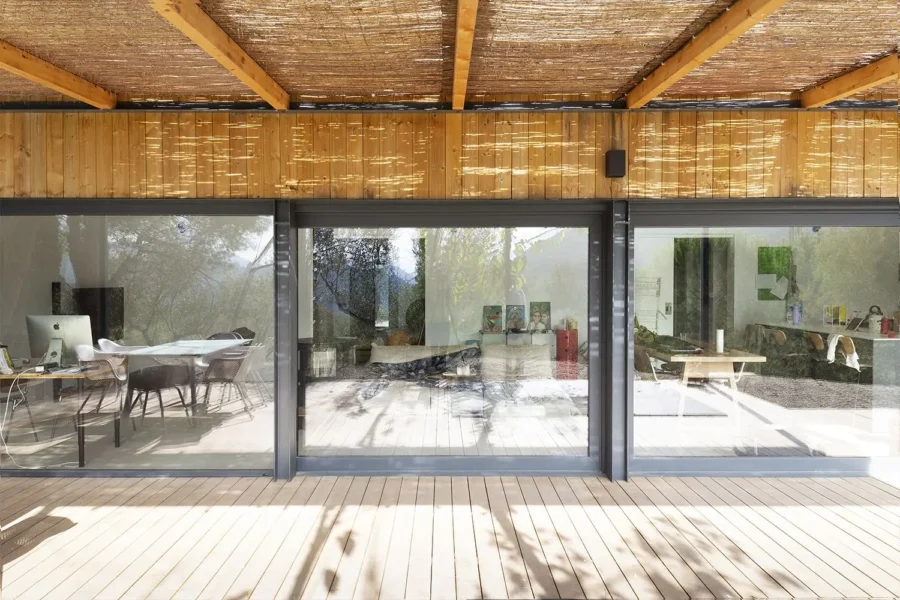Often, in the first conversations we have about new homes, you tell us that you are interested in having a Passivhaus house. It is normal: PASSIVHAUS are in fashion. In our immediate environment, having a PASSIVHAUS designer’s certificate is a guarantee of work.
Most of you know quite well what are the benefits of building a PASSIVHAUS house (that’s what those who promote it sell) but the vast majority are unaware that there are other strategies and concepts (much older and cheaper) that would serve not only in your energy efficiency goals, but will ensure that your home is RENEWABLE, SUSTAINABLE, ECOLOGICAL, CONTRIBUTING to the HEALTH OF THE PLANET, and its OCCUPANTS.
LET’S GET DOWN TO BUSINESS.
PASSIVHAUS is a German energy certification standard. And buildings with this certificate offer the guarantee of excellent insulation, no thermal bridges, and a mechanical ventilation system with heat recovery, which guarantees optimum ventilation with little heat loss.
These “characteristics” or “features” are highly valued in countries with cold climates, because they guarantee comfort with high energy efficiency.
But we would like to go a little further, and incorporate some other concepts and strategies of an “ancestral traditional knowledge”, with which we can aspire to make our house have many more advantages than energy efficiency.
Without wishing to cast down the PASSIVHAUS certification and its characteristics, it seems substantial to point out its importance in our Mediterranean climate, to weigh which features of this construction system are highly recommended, and which are dispensable; especially if you want to cancel some costs, or put the focus on other particularities, for us even more important.
It goes without saying that we defend to the hilt to build with PASSIVE ARCHITECTURE criteria. That is, to make an architecture focused on the idea of energy efficiency, implementing strategies so that the building does not need to activate any artificial system to achieve comfort. But before deciding on insulation thicknesses and mechanical ventilation systems (among others) it is worth taking a look at the criteria of BIOCLIMATIC ARCHITECTURE, which will be of great help for our passive house objectives, and saving on material and technology costs. Fortunately we still do not have to pay for designing taking advantage of natural resources such as sun, wind, rain or vegetation.
CLARIFYING CONCEPTS.
While PASSIVE ARCHITECTURE focuses essentially on the idea of energy efficiency and the strategies carried out so that the building does not require active energy input for its use and operation, BIOCLIMATIC ARCHITECTURE focuses more on the DESIGN PROCESS OF THE BUILDING, making the most optimal use of NATURAL RESOURCES, for which it studies in depth the climatic conditions and local materials.
When we do BIOCLIMATIC ARCHITECTURE, we add the prefix “bio”, which implies that the construction will be in accordance with the biology of the environment, with little or no incorporation of petroleum-derived materials, and therefore HEALTHY AND NATURAL for the environment and its occupants.
BIOCLIMATIC ARCHITECTURE
The main aspect of bioclimatic architecture is the MAXIMUM USE OF NATURAL RESOURCES, such as the sun, vegetation, rain, wind, which results in a lower environmental impact and greater integration of the building in the natural landscape, resulting in visually less aggressive buildings.
As a result of the use of natural resources and the optimization of the environment, PASSIVE ENERGY SAVING SOLUTIONS are achieved, which is one of the key factors of SUSTAINABLE ARCHITECTURE.
STRATEGIC GUIDELINES FOR BIOCLIMATIC DESIGN.
- Take advantage of the incidence of natural light (especially in winter), while controlling sunlight (in summer).
- Protect the house and its inhabitants from geological alterations.
- Take advantage of the wind as an inexhaustible resource for natural ventilation.
- Reserve free spaces and incorporate vegetation to avoid the heat island effect.
- Choose and design the construction systems to complete issues that are not solved from the design of the implementation, volume and shape such as: thermal inertia, insulation, ventilation, protections.
- Choose “bio” materials, in harmony with the biology of the environment, and little or no incorporation of chemical materials or petroleum derivatives.
These strategic guidelines are applicable in various phases of the design, from the implementation of the building on the site, through the design of the volume and shape, the design of the envelope, the design of the construction system, the design of facilities, to the choice of materials.
How to apply the strategic guidelines in each phase of the design.
PHASE 1. “THE IMPLANTATION”.
Let’s pay attention to the curve that the sun makes in its path, according to the month of the year.
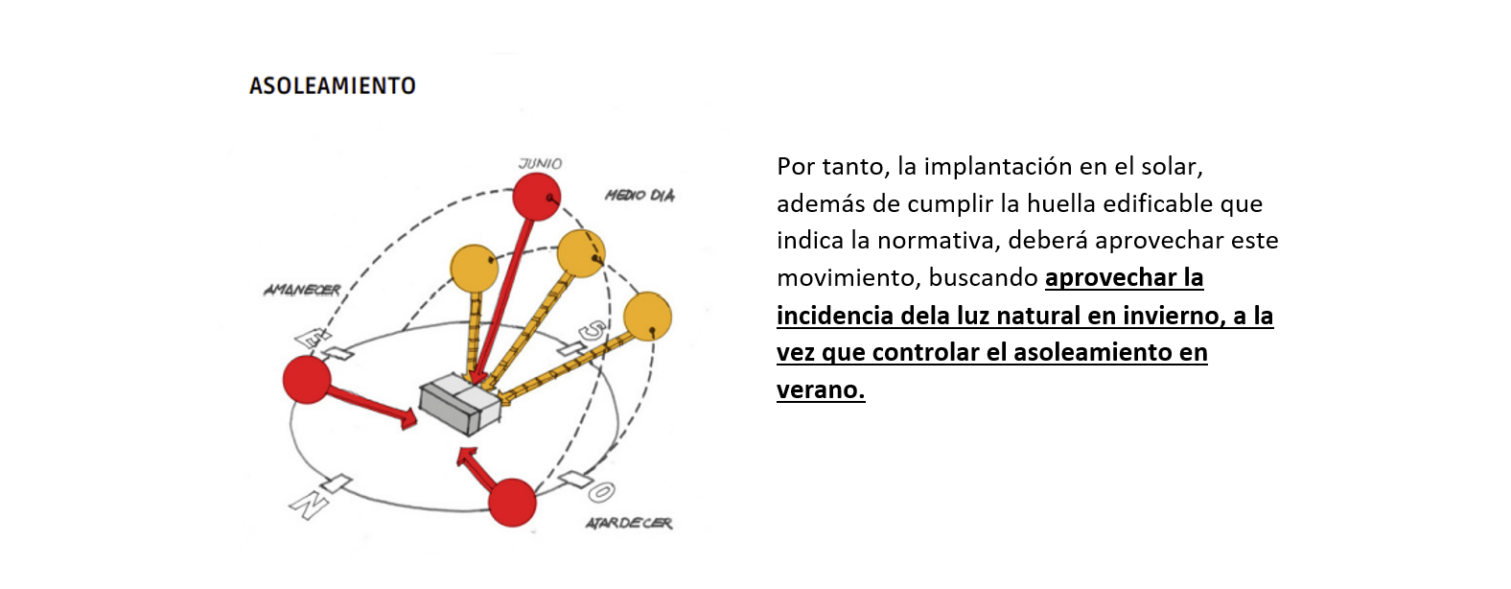
As a second premise, we must know that natural soil (unpaved or even uncompacted) has a low thermal inertia, capable of absorbing the carbon dioxide emissions produced by human activities. As it is a porous material, it accumulates humidity, evaporating progressively during the day when temperatures rise. By reserving free space on the site, it will influence the comfort of the house, avoiding the “heat island” effect so typical of large cities.
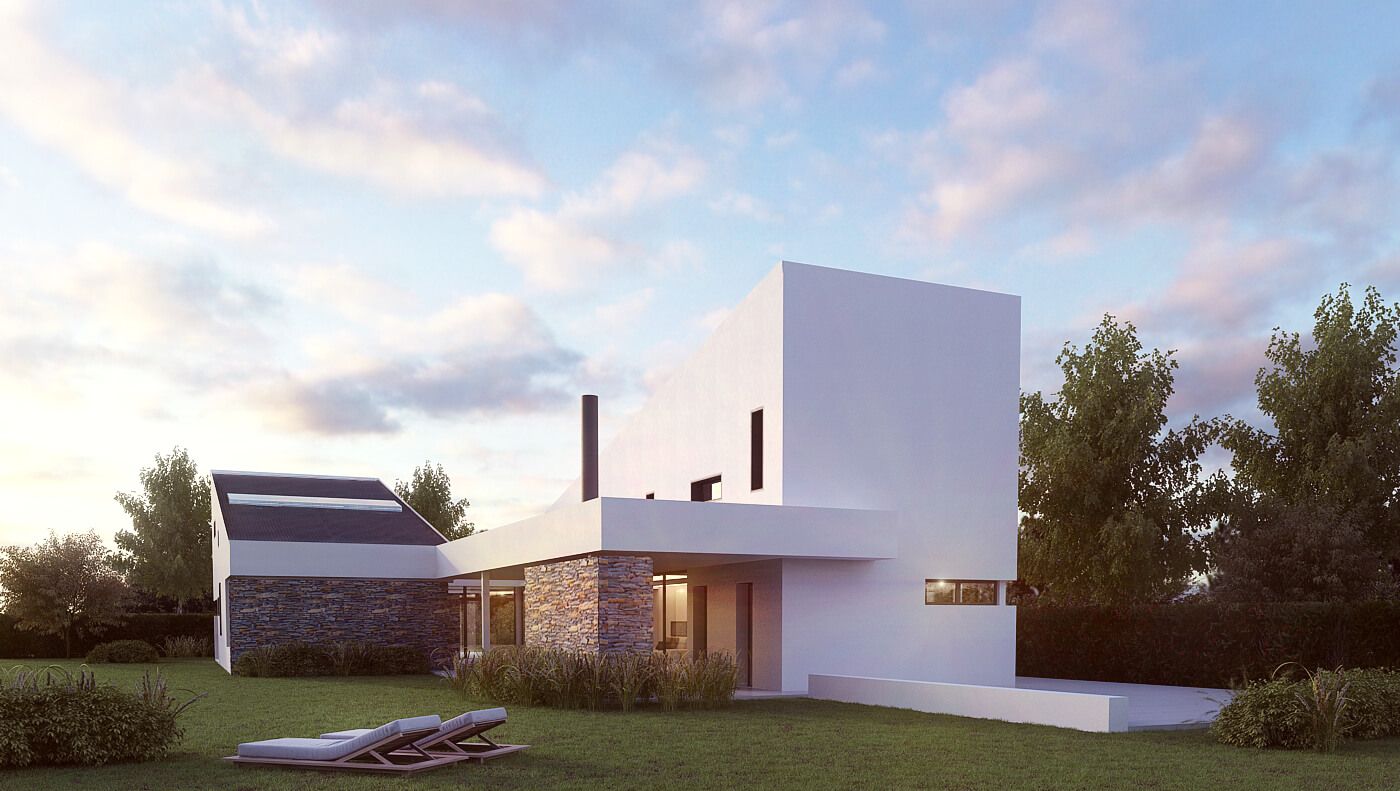
To this must be added the need for visual control of the interior to the exterior (for emotional security of its occupants), and protected views from the public road, to give privacy to the dwellers. We must say that this concept is more related to neuroarchitecture than to bioclimatic design, but it is in this design phase when it must be put on the table.
IMPLEMENTATION STUDY OF A HOUSING (on a standard site)
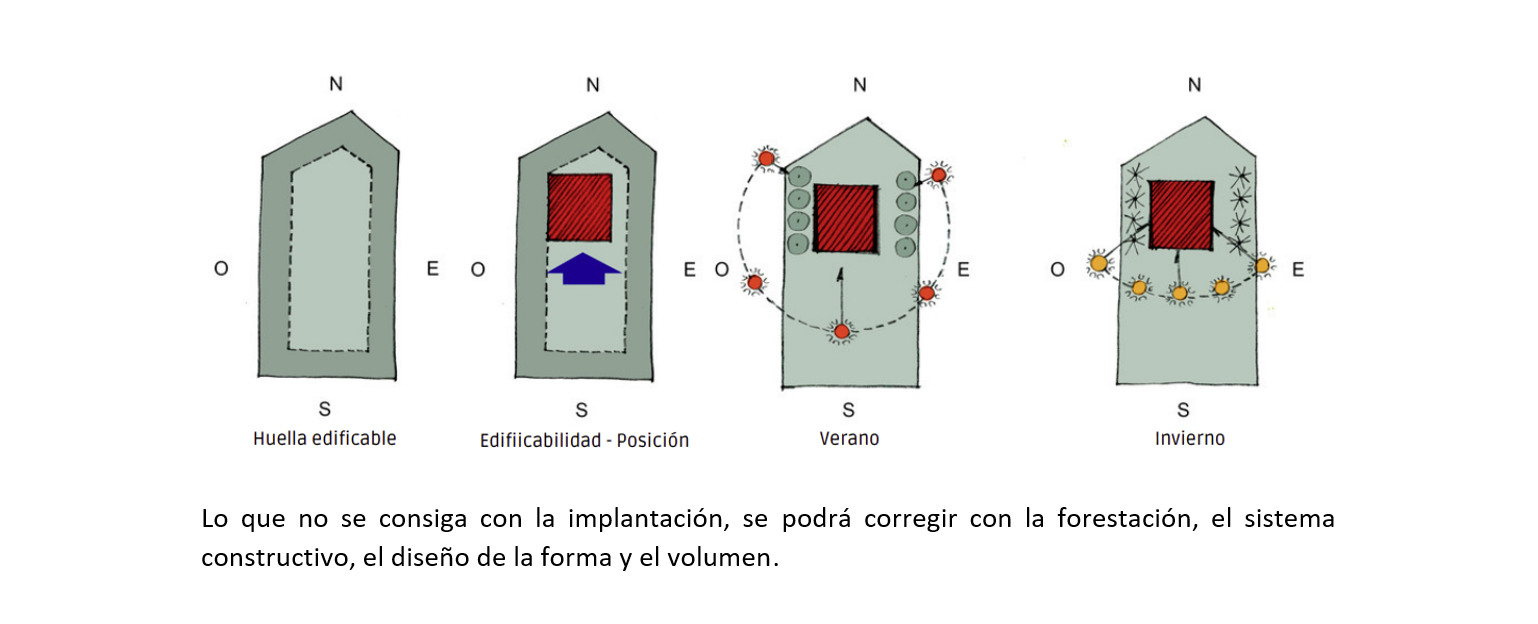
PHASE 2. “DESIGNING VOLUME AND FORM”.
Our work as architects, focuses on designing new construction, extensions and renovations.
Our goal is to make buildings as sustainable and healthy as the client and the budget will allow. And of course, many of these objectives are achieved by correctly designing the construction system and choosing envelopes that collaborate to this end. Technology can make great contributions, but the first thing is the design of the volume and shape of the building. And we know that these decisions make great contributions to the final result. And although it is not possible to generalize (sometimes there are very complex plots), it usually costs the same money to implement the building in one area of the plot as in another.
When designing the volume and shape, there are some concepts, which structured in the form of questions, can be essential guidelines in our design roadmap.
They all start from the premise that the sun and the wind are two inexhaustible natural elements, and it is up to us to know how to use them.
Dimension, proportion, compactness.
What is the right depth for our volume?
A volume that is too deep hinders the natural lighting of the central areas.
How compact should our building be?
The more compact the building, the less surface area in contact with the exterior (thermal advantages), but we have to find the right balance between energy efficiency and economy versus views and natural light.
How big should the façade openings be?
Let’s study the design of the building and its openings, testing volumes of different sizes and orientations, to obtain attractive visuals from different points of the building.
And once we have it, let’s design the size of the openings, simultaneously with the rest of the constructive elements (pergolas, porches, etc.)
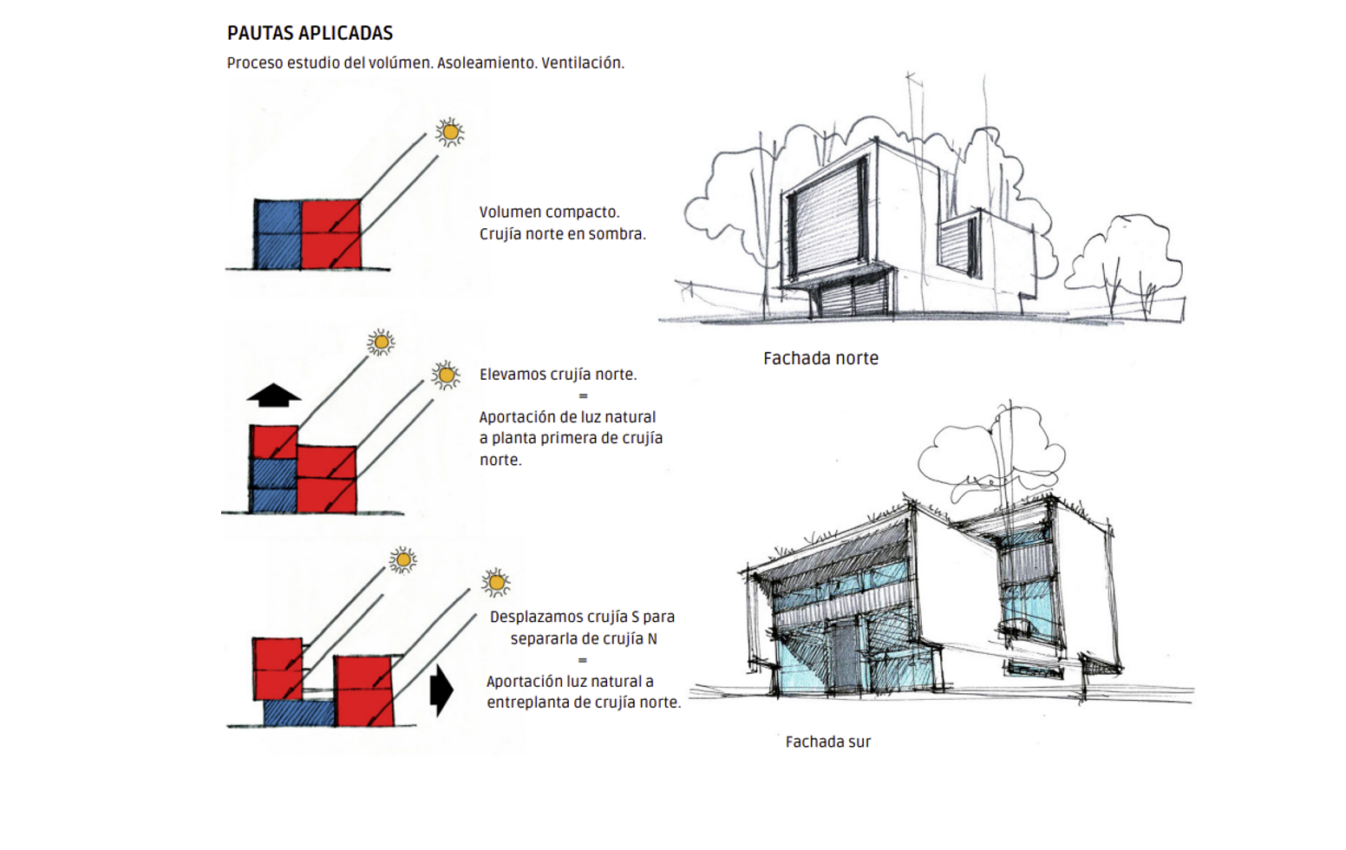
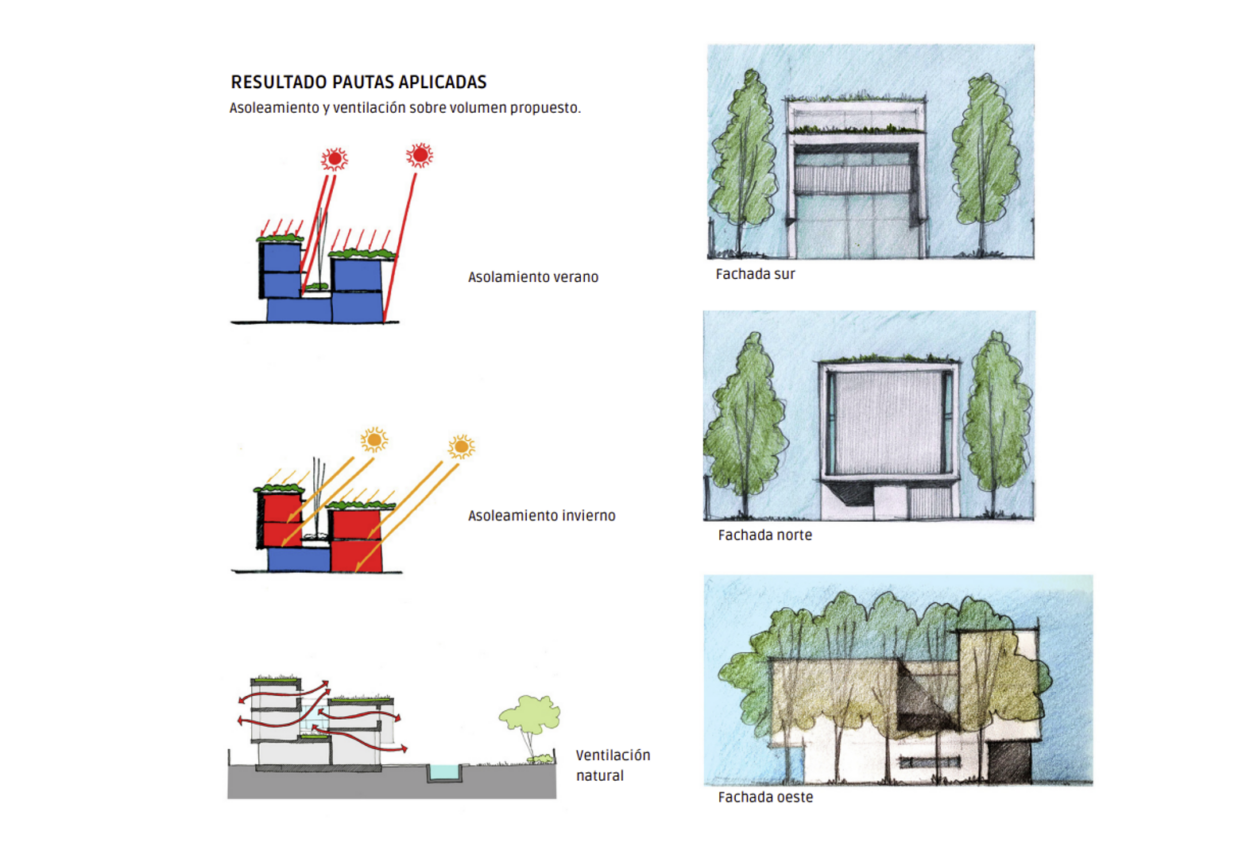
Once we have the volume and shape,
PHASE 3. “CONSTRUCTION SYSTEM”.
3.1. HOW TO DESIGN THE BUILDING ENVELOPE WITH BIOCLIMATIC CRITERIA”.
The building envelope is everything that surrounds it. Also the faces that are not seen (foundation / slab / floor) or that are little seen (roof).
When designing the construction details that will make up the “hidden” envelope of our building, there are two important factors to take into account, which will not only help efficiency, but will also have an impact on the health of its inhabitants.
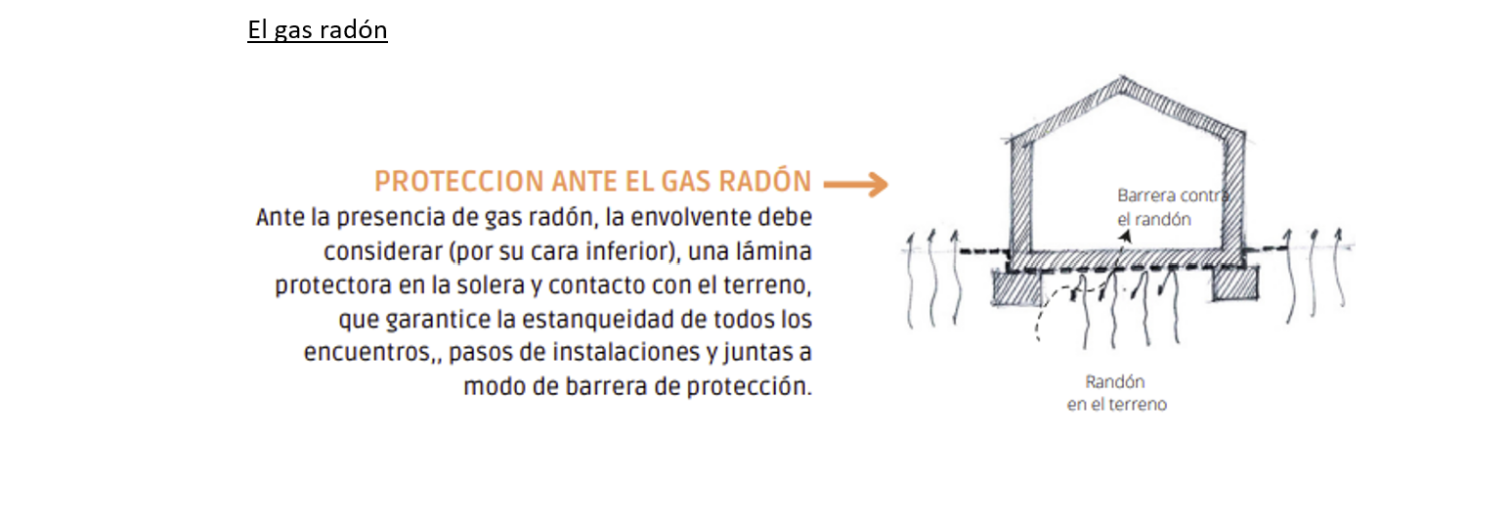
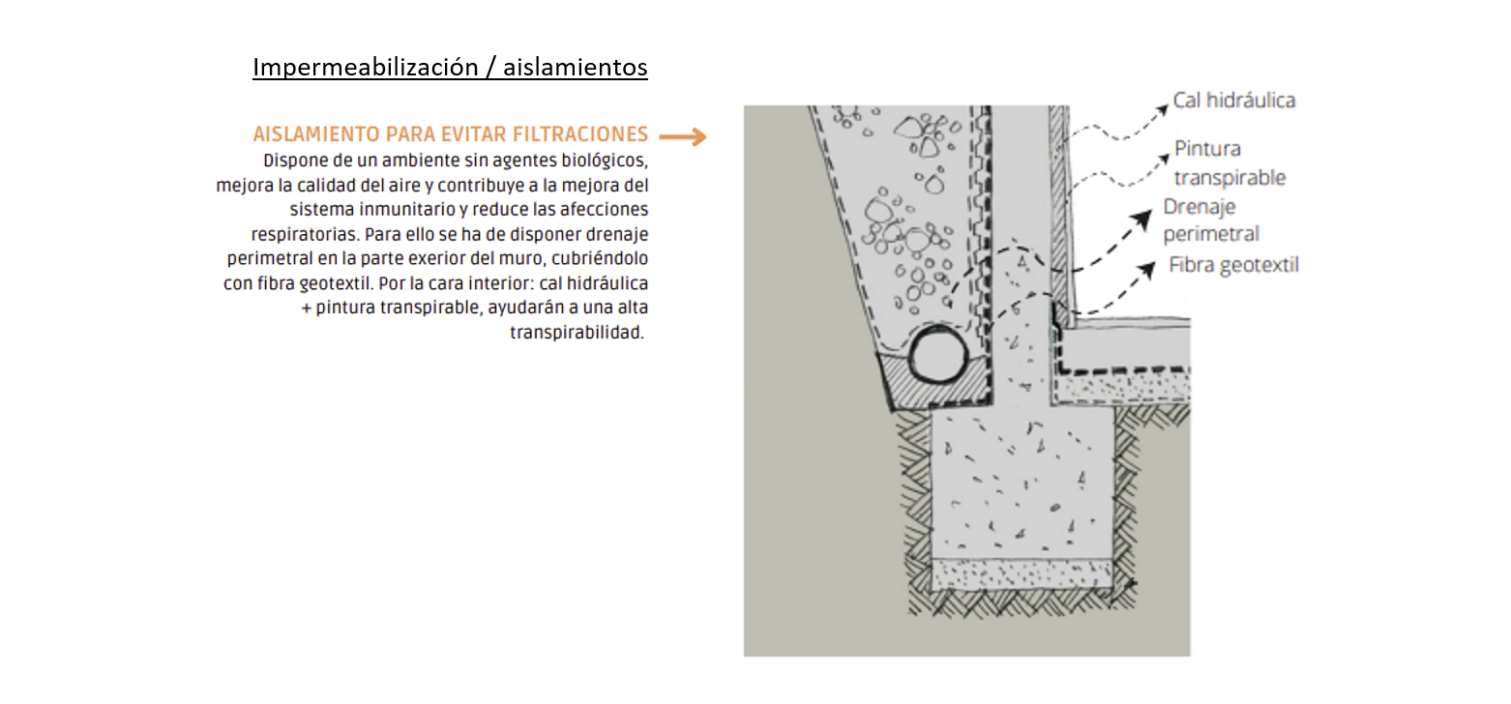
For the visible envelope (the skin), we must take into account concepts of insulation and thermal inertia.
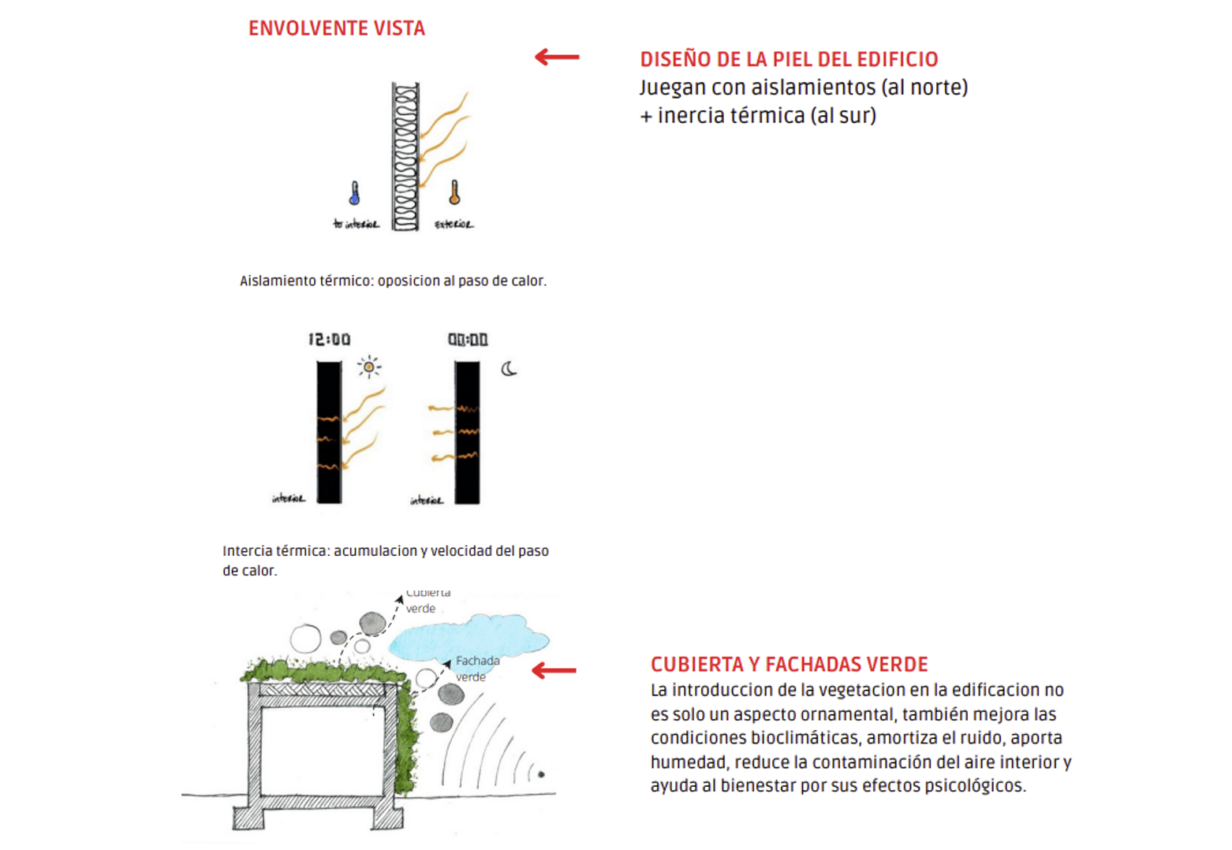
3.2. WHAT OTHER COMPLEMENTARY RESOURCES DOES THE CONSTRUCTION SYSTEM PROVIDE US WITH?
Sometimes, due to terrain conditions, regulations, etc., we are not able to take full advantage of natural resources.
In those cases, it will be necessary to complement or reinforce with constructive systems and/or choice of materials, the unresolved (or unfinished) questions of the achieved design.
Contributions that we get with “correct constructive systems” and “correct choice of materials” and that will help to a bioclimatic design:
SUN PROTECTION such as porches, eaves, adjustable horizontal slats, pergolas, exterior screens, interior textiles, which will be chosen according to orientation, and shadows generated by neighboring or nearby buildings.
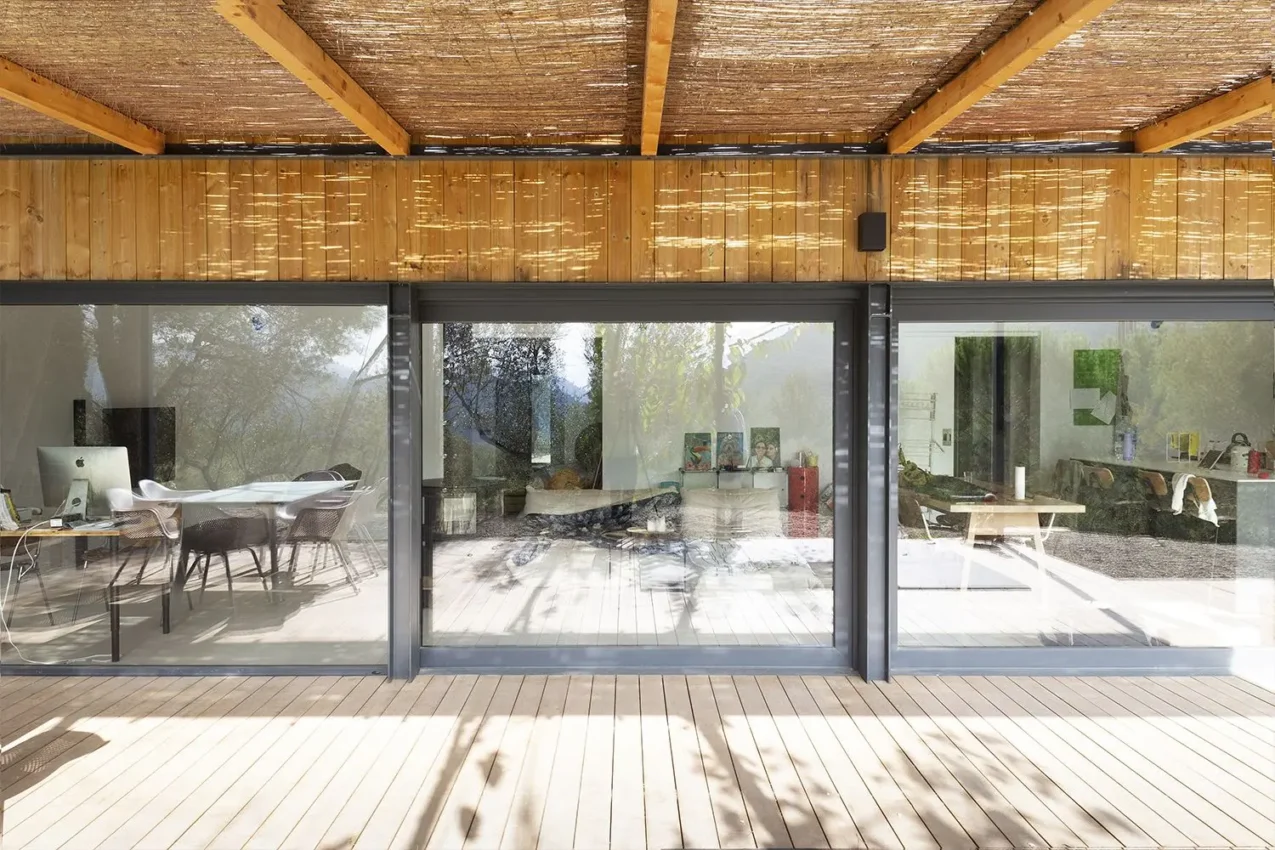
THE COLOR OF THE FACADE, light colors absorb less energy than dark ones, this is the reason why white is so present in Mediterranean architecture, and black in Scandinavian architecture.
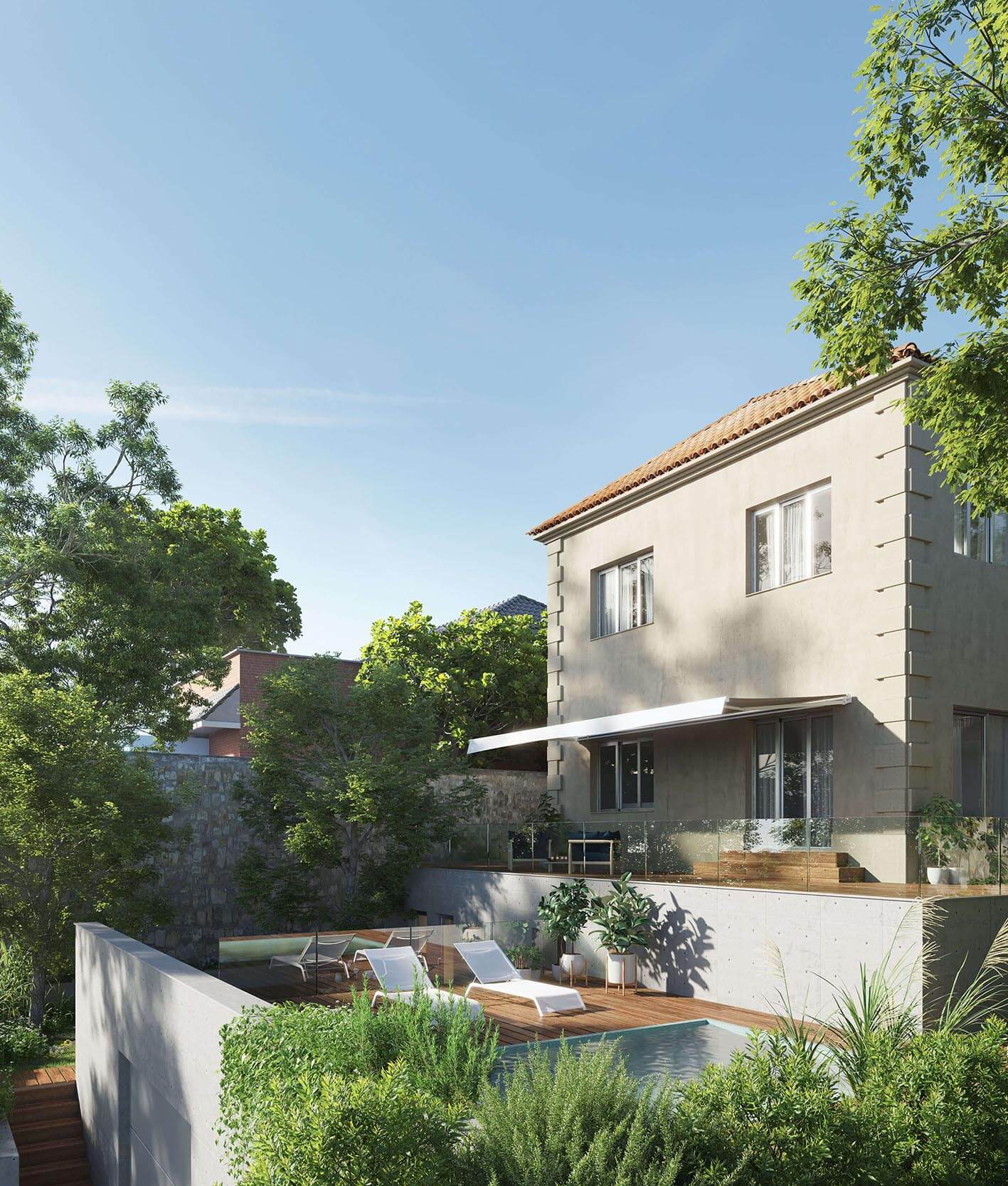
THE CHOICE OF MATERIALS WITH HIGH THERMAL INERTIA.
Thermal inertia is the capacity of certain construction elements to store heat, conserve it and release it progressively. The natural element with the highest specific heat is water, although, as a general rule, liquids are not used as building materials. For this reason, green roofs (made of topsoil with a high water content) are an alternative that guarantees high thermal inertia.
GUARANTEEING A CORRECT THERMAL INSULATION is fundamental in the design of bioclimatic architecture.
The characteristics to be taken into account when measuring the insulating capacity, are:
- high thermal conductivity,
- low thermal transmittance,
- ability to store air inside and that it is a lightweight material.
THE INCORPORATION OF VEGETATION.
The use of vegetation in buildings improves the quality of indoor and outdoor spaces by mitigating the heat island effect and balancing climatic conditions, while contributing to the creation of healthier spaces. But it is important to know the characteristics of the chosen vegetation when designing the garden or terraces.
3.3. WHY CHOOSE LOCAL MATERIALS ALIGNED WITH BIOCONSTRUCTION”?
The prefix bio, incorporates the concept of biology. This means choosing materials and finishes under the umbrella of health: that is, materials that generate healthy spaces and therefore do not release chemical pollutants (derived from petroleum), thus reducing the environmental footprint. Some of the materials that meet these criteria are: cork, sheep’s wool, wood fiber, cellulose, recycled cotton, seaweed, linen fiber…
And the main reasons for this choice are:
1. that the indoor environment conditions are healthy for the people who live in them.
2. that the construction activity ceases to produce damage to the natural environment, in the percentage that it is doing.
NOTE.
To illustrate the concepts presented, sketches of a pilot project developed in the studio have been used.
The concepts explained are adapted to the Mediterranean climate of the northern hemisphere where we live, design and build.
The Mediterranean climate is characterized by temperatures around 20ºC, with mild, rainy winters and hot, dry summers.
In the northern hemisphere, solar gain is achieved by facing south. For buildings located in the southern hemisphere, solar gain is oriented to the north.
To apply bioclimatic architecture concepts in other climates, local conditions must be studied.
GOKOSTUDIO
When we apply all these bioclimatic criteria mentioned above, we inevitably transpose them with our desire to create buildings that are energy efficient, but also BEAUTIFUL and that PROMOTE the PHYSICAL and EMOTIONAL HEALTH of those who occupy them. We strive to find this balance between beauty, comfort, efficiency and functionality.
